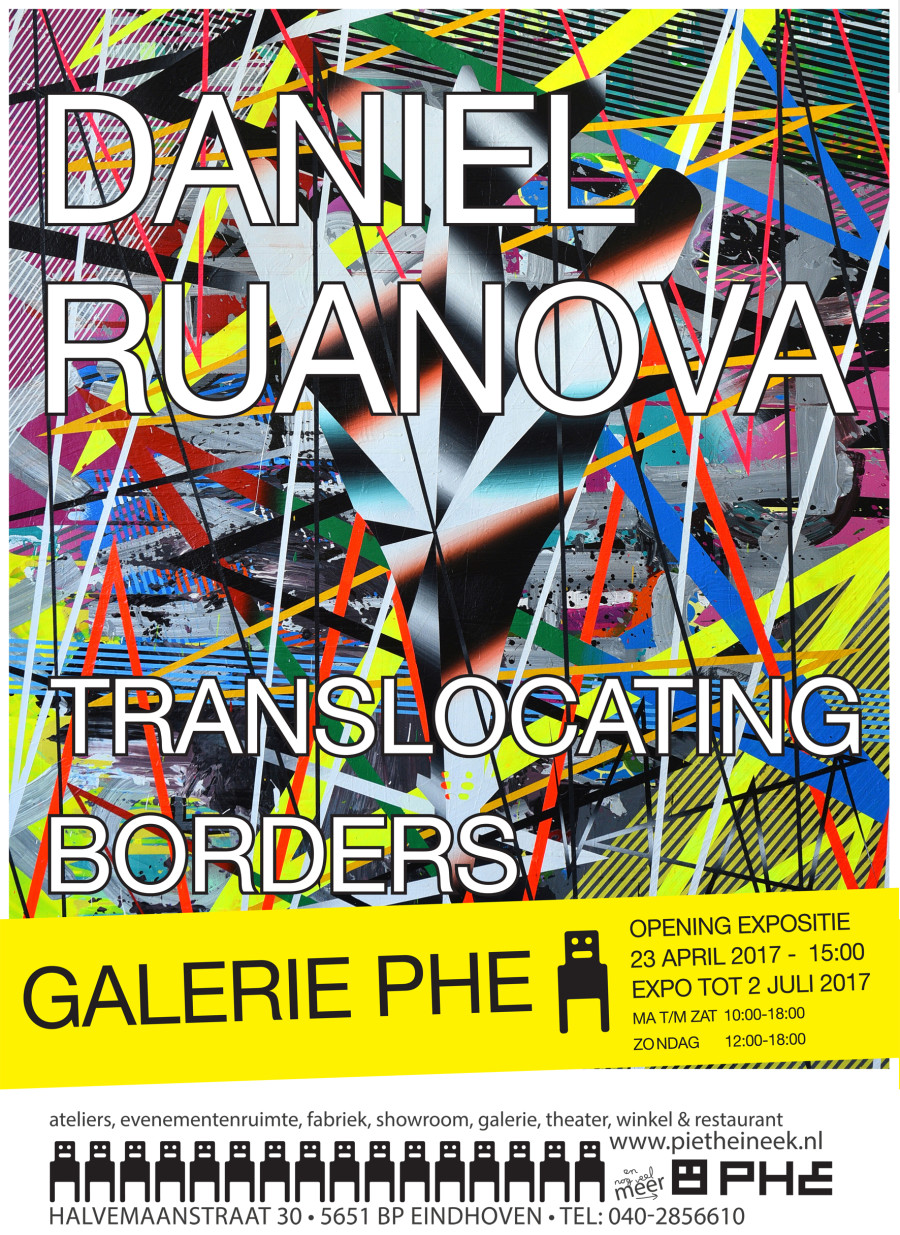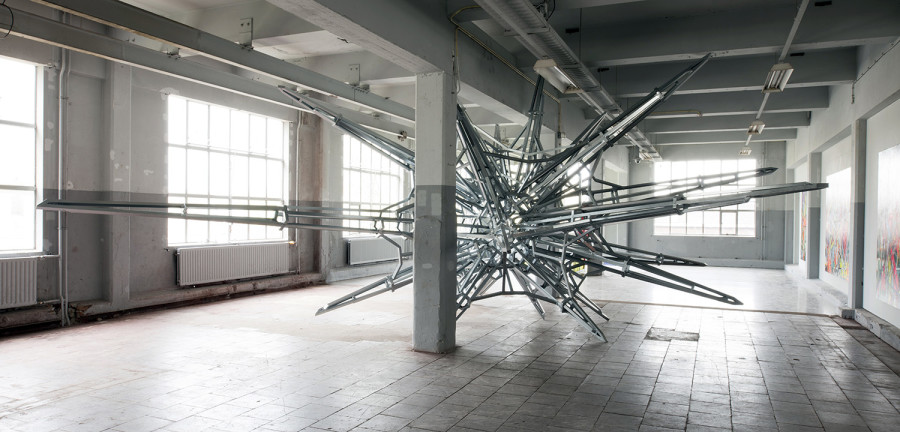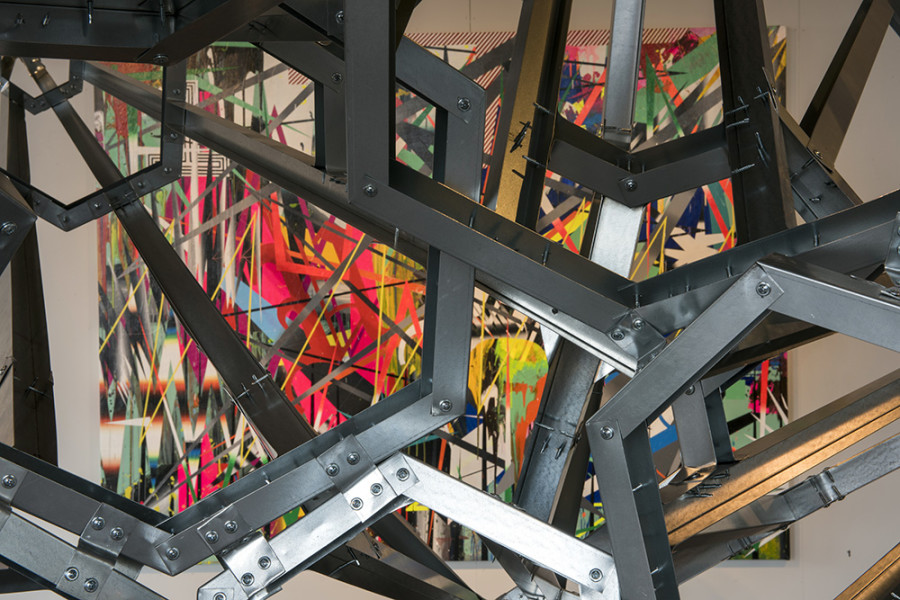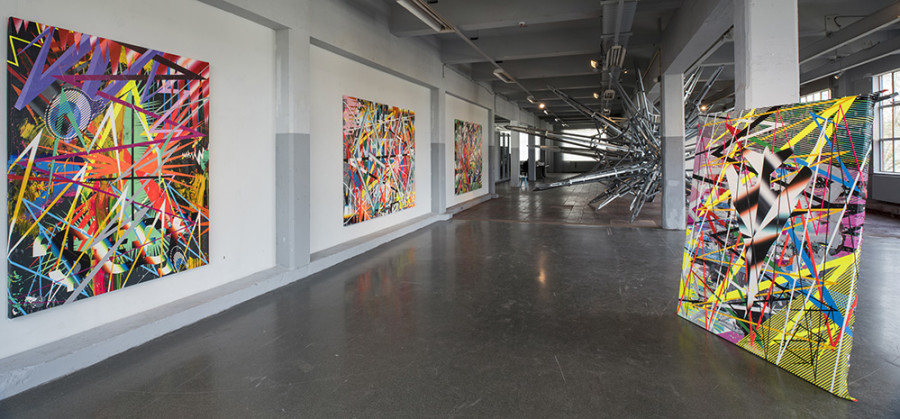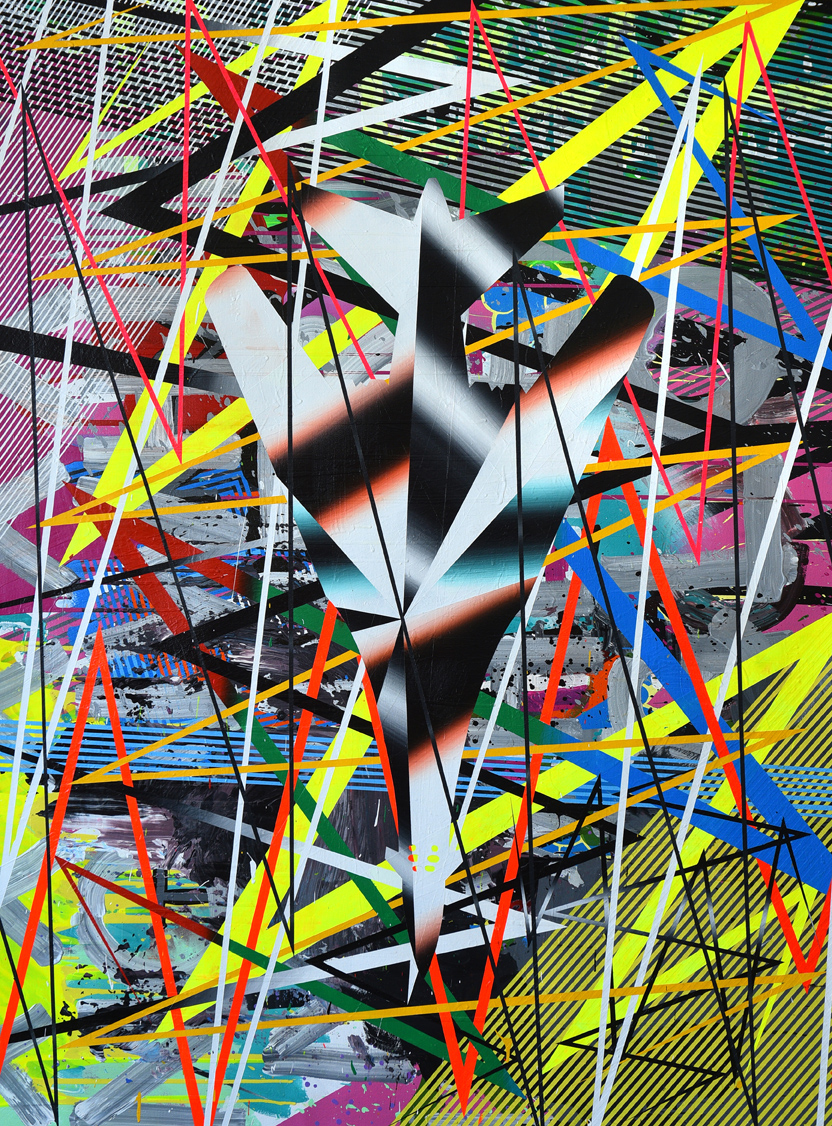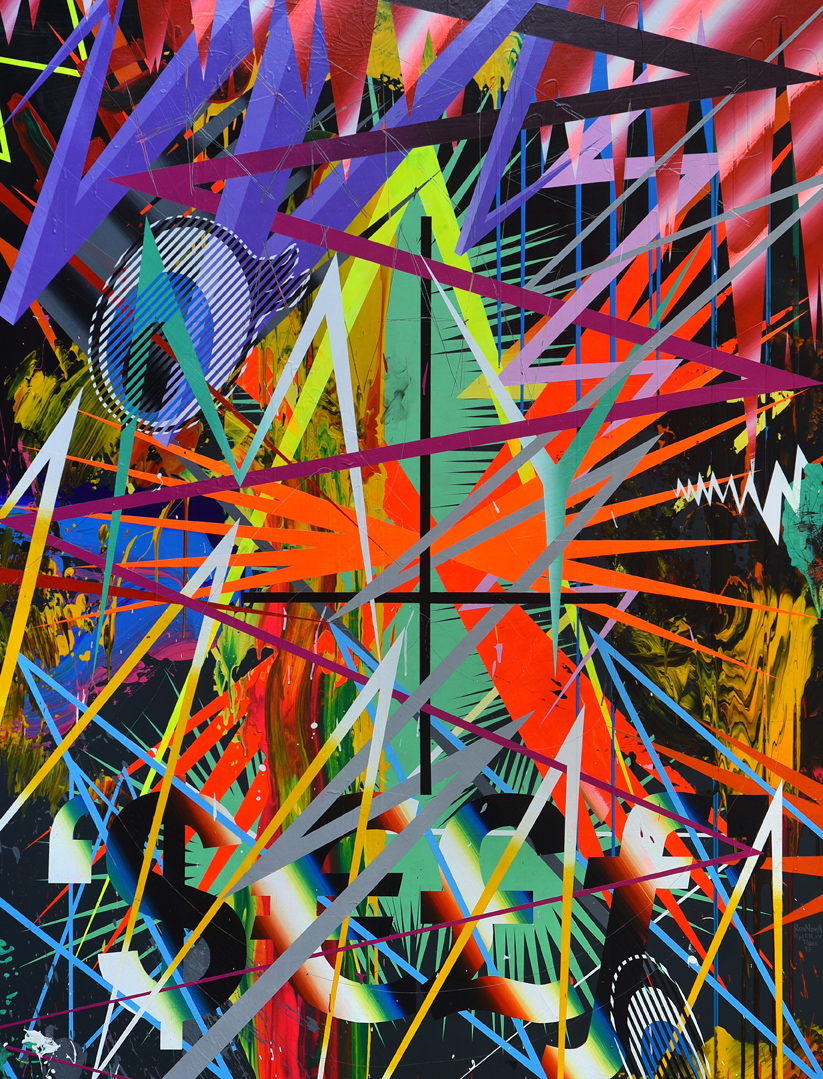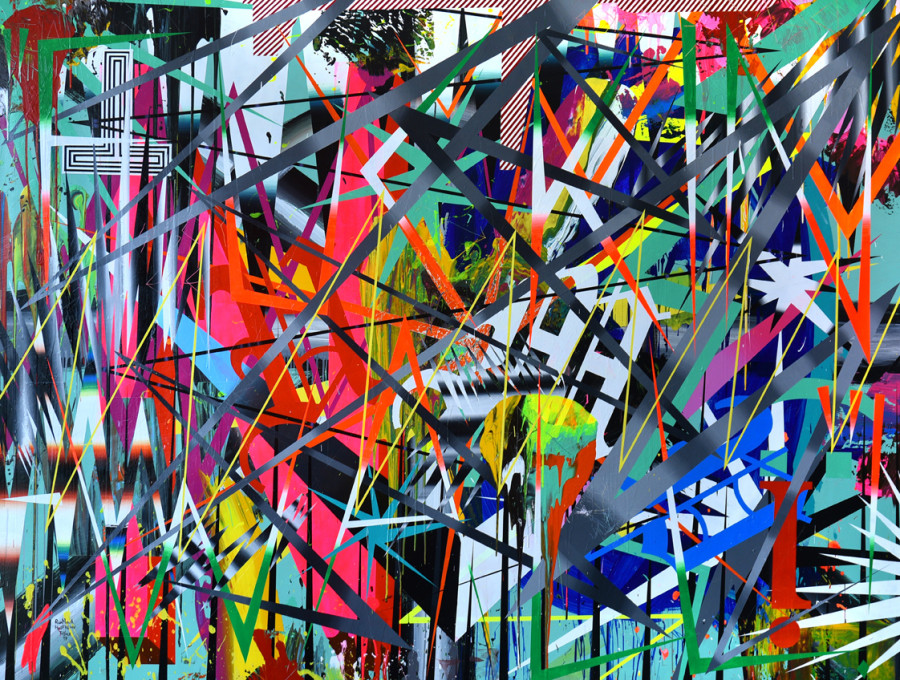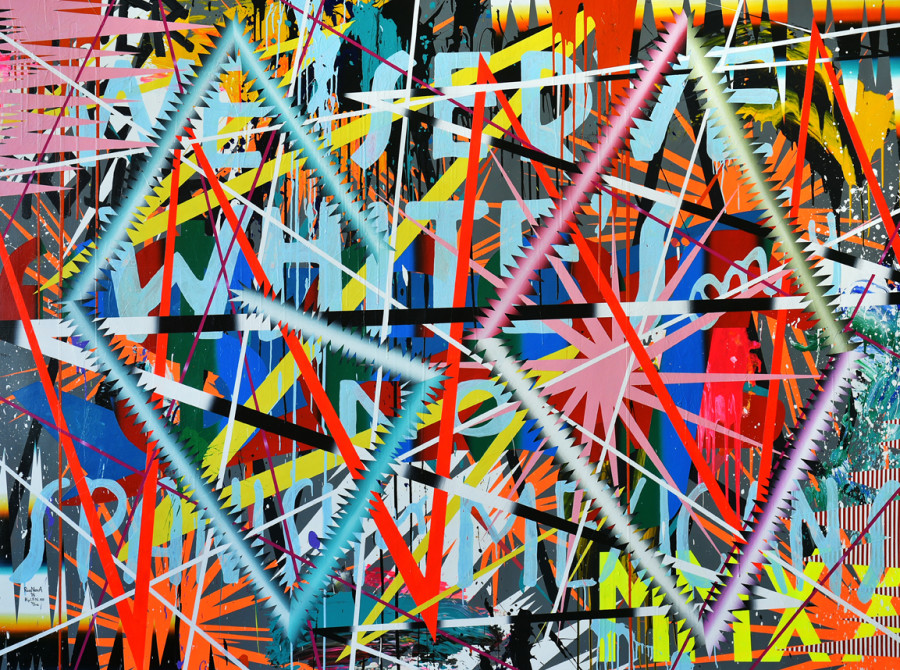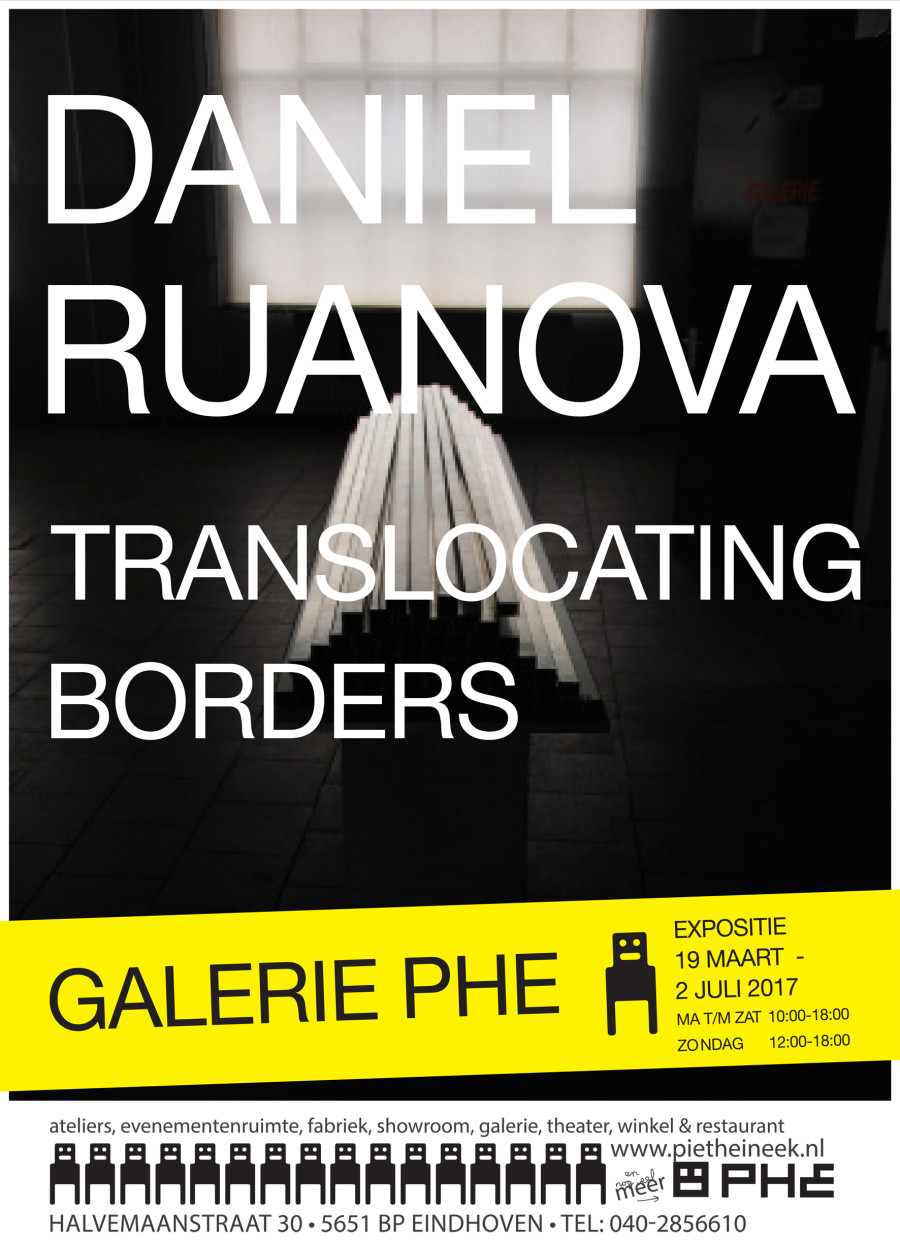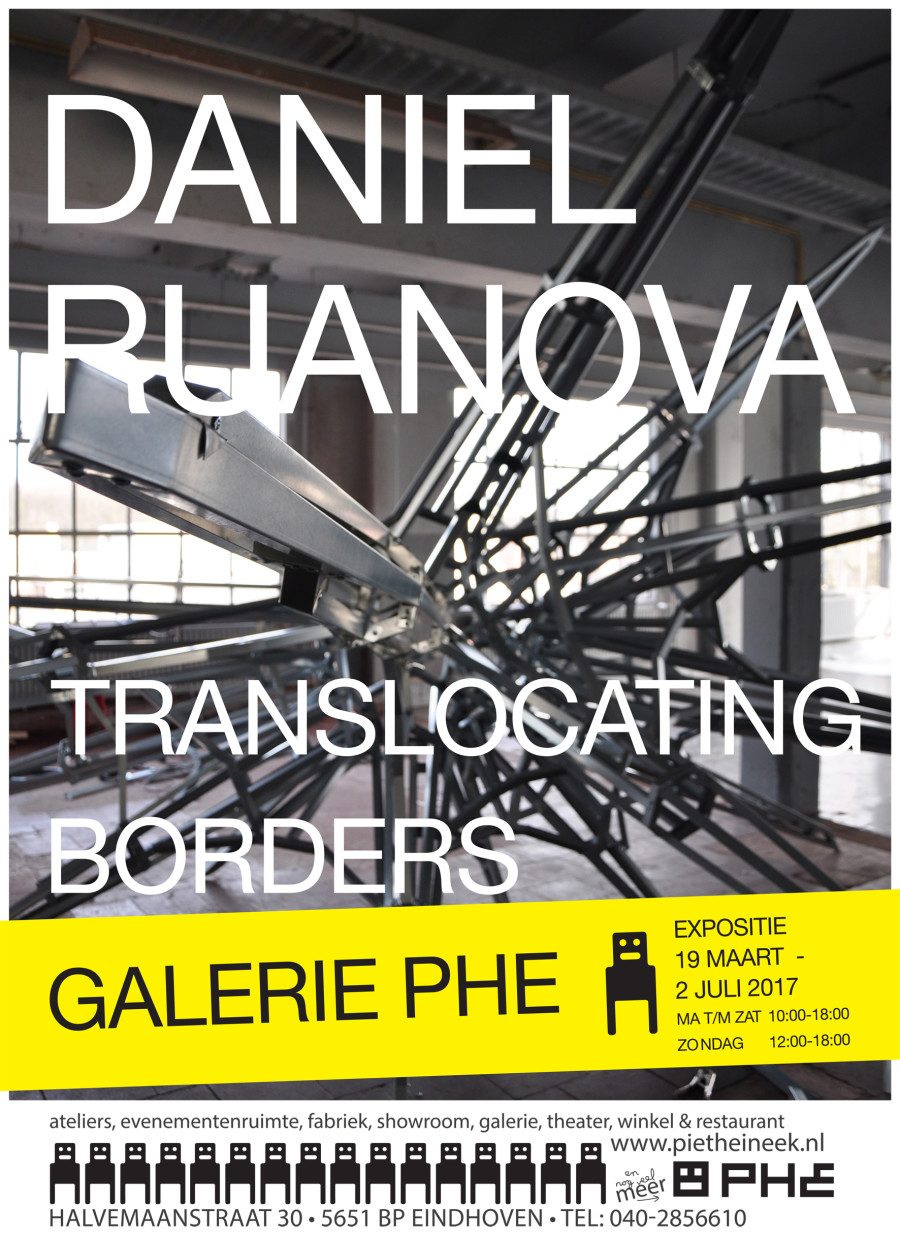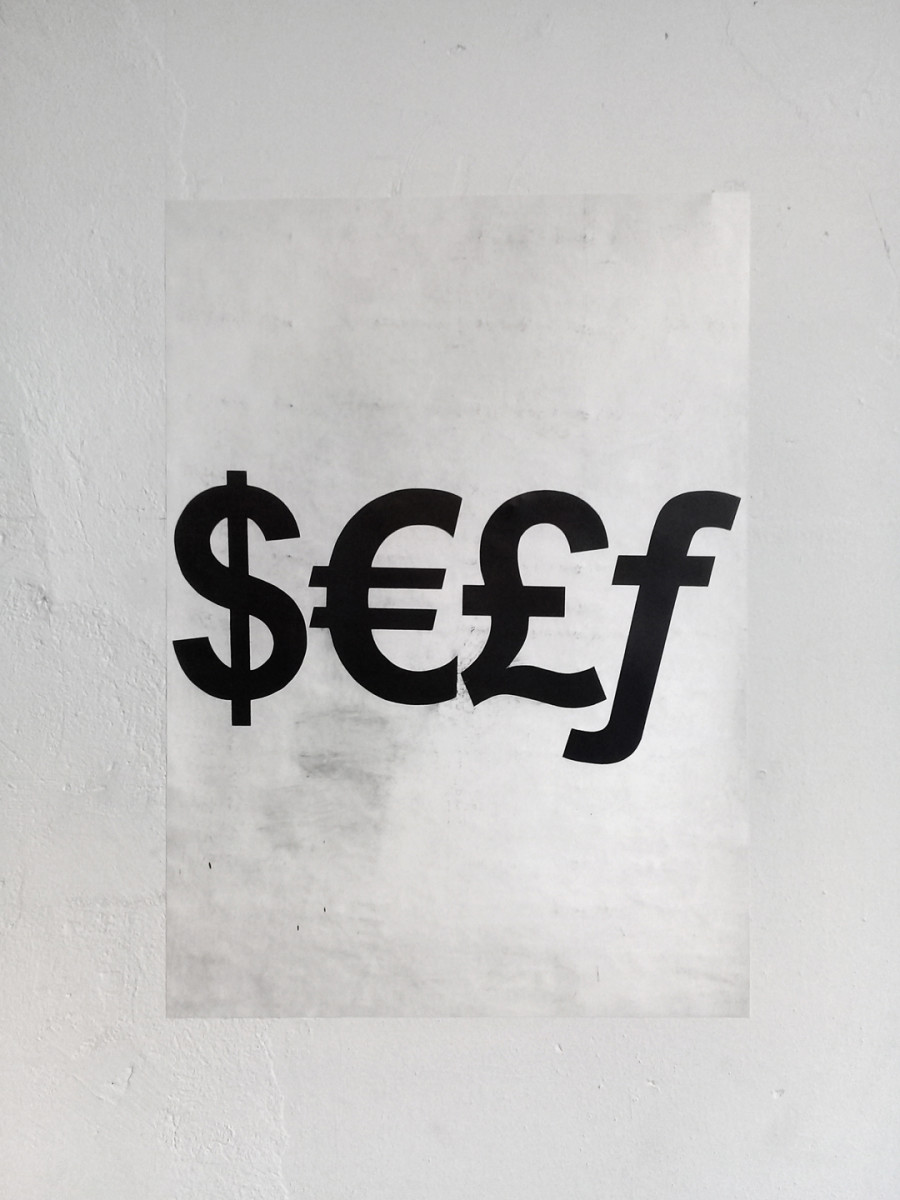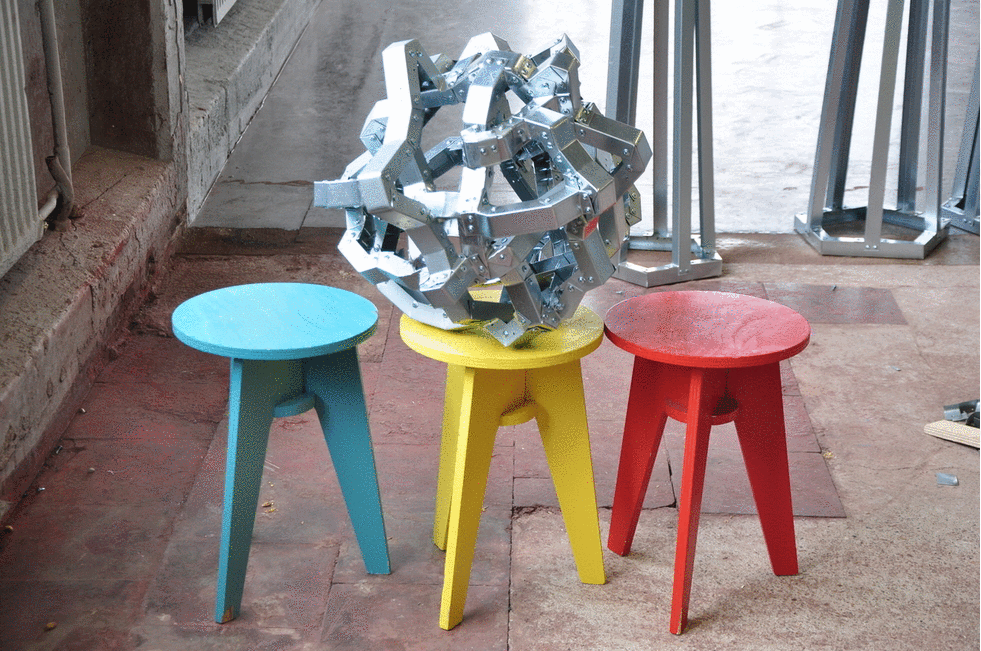TRANSLOCATING BORDERS / Exhibition & Artist Residency @ PIET HEIN EEK, Eindhoven, NL
The Mexican artist Daniel Ruanova (1976) comes from a different world and a different culture, a world with urgency and where survival takes time. Death is an integral part of his culture, not only because of the drugs wars, political instability and poverty. As Ruanova himself explains: ‘if you do not embrace death, it will haunt you’. Death and life are inextricably linked with each other and are a part of nature. When a coyote grabbed and ate a calf on his grandfather’s ranch, the very same place in the desert landscape was marked the following year by flowers that had started growing there.
Nature is also a source of inspiration for the defensive constructions that Ruanova makes. The structures, made from modular wall profiles, are created according to the mathematical logics of nature. We now produce these U-profiles ourselves, because the profiles used in Europe proved to be unsuitable. The way in which this structure is built up organically is the same as how a cactus grows and occupies space.
Ruanova has gathered an incredible wealth of knowledge and has developed a feel for the possibilities of using steel construction materials to let a structure grow organically. The structure protects the essence, but is simultaneously also sharply daunting.
According to Ruanova, the art world is changing and he, as an artist, can therefore change this world: his existence as an artist is urgent. Just like a cactus in the desert, he is a part of Mexico – a child of his country – and in everything he does, he breathes and communicates the care, love and unwavering trust in his origins and the future.
He currently lives in Tijuana, a city on the border between Mexico and the United States. Violence and social tension are quite commonplace here. In recent years Ruanova has used his new project ‘New World Border’ to focus on the generation of an increased awareness of border cultures.
The current anti-Mexican political climate in the United States also has a positive side, according to Ruanova. It has led to the fortification of the Mexican culture and a growing self-awareness, which in turn has created new opportunities. As there is growing tension along borders all over the world, and Ruanova’s work transcends local issues due to its contemplative and elaborate nature, his presence with us here in Eindhoven is even more interesting than we thought.
As well as the fact that his work, down to the finest detail, is a result of the consciousness of current affairs and what’s going on in the world, Ruanova also turns out to be an anecdotal narrator and someone who accurately observes his surroundings. Although his sculptures and paintings radiate enormous aggression and give the viewer the impression that he actually wants to shut himself away from the world around him, he actually wants to achieve exactly the opposite. Ruanova is anything but pessimistic. He defines himself as a ‘realist and humanist’, someone who comes from a relatively young culture, in which the future is still open and to which he, as an artist, can have an active contribution.
//
De Mexicaanse kunstenaar Daniel Ruanova (1976) komt uit een andere wereld en een andere cultuur, een wereld met urgentie en waar overleven tijd vergt. Niet alleen vanwege de drugsoorlogen, politieke instabiliteit en armoede, is de dood vast onderdeel van de cultuur. Zoals Ruanova zelf vertelde: ‘als je de dood niet omarmt wordt je erdoor achtervolgd’. Dood en leven zijn onlosmakelijk met elkaar verbonden en zijn onderdeel van de natuur. Als een coyote op de ranch van zijn opa een kalf te grazen nam en opat, werd deze plek in de woestenij het jaar daarop gemarkeerd doordat er bloemen groeiden.
De natuur is tevens de inspiratiebron voor de beschermingsconstructies die Ruanova maakt. De van systeemwandprofielen gemaakte structuren worden volgens de mathematische logica van de natuur vervaardigd. Wij produceren deze U-profielen nu zelf, want de profielen die in Europa worden gebruikt bleken niet geschikt te zijn. De wijze waarop deze structuur organisch wordt opgebouwd is die van hoe een cactus groeit en de ruimte inneemt. Ruanova heeft een ongelooflijke kennis opgebouwd en gevoel ontwikkeld voor de mogelijkheden die er zijn om met de stalen bouwmaterialen een structuur organisch in de ruimte te laten groeien. De structuur beschermt het wezen, maar is tegelijkertijd ook priemend en afschrikwekkend.
Volgens Ruanova verandert kunst de wereld en kan hij als kunstenaar dus de wereld veranderen: zijn bestaan als kunstenaar is urgent. Hij is zoals de cactus in de woestijn onderdeel van Mexico – kind van zijn land – en in alles ademt en communiceert hij de zorg liefde hoop en het rotsvaste vertrouwen in zijn herkomst en de toekomst.
Momenteel is hij woonachtig in Tijuana, een stad op de grens tussen Mexico en de Verenigde Staten. Geweld en sociale spanningen zijn hier aan de orde van de dag. De afgelopen jaren richt Ruanova zich met zijn project ‘New World Border’ op het creëren van een groter bewustzijn bij grensculturen.
De huidige anti-Mexicaanse politiek in de Verenigde Staten heeft volgens Ruanova ook een positief punt. Het leidt tot de versterking van de Mexicaanse cultuur en een groeiend zelfbewustzijn, waardoor ook weer nieuwe kansen worden gecreëerd. Omdat er wereldwijd spanningen langs grenzen zijn en het werk van Ruanova, door de beschouwende en doorwrochte aard ervan, de plaatselijke problematiek overstijgt, is zijn aanwezigheid bij ons in Eindhoven nog belangwekkender dan we dachten.
Naast dat zijn werk tot in de haarvaten voortkomt uit bewustzijn van de actualiteit en waar het in de wereld over gaat, blijkt Ruanova ook een anekdotische verteller en iemand die de wereld rondom hem heen nauwkeurig observeert. Hij is allesbehalve pessimistisch en definieert zichzelf als een ‘realist en humanist’, iemand die uit een relatief jonge cultuur komt, waarin de toekomst nog open ligt en waaraan hij als kunstenaar een actieve bijdrage kan leveren.
_____________________________________________
Information of individual works:
- DEFENSE seed I / Galvanized steel drywall studs and self drilling screws / Ø 80 cm / 2017
- DEFENSE seed II / Brass drywall studs and self drilling screws / Ø 80 cm / 2017
- THE FUCK OFF PROJECT – SAFE AREA 11 / Galvanized steel drywall studs and self drilling screws / 700 x 800 x 400 cm / 2008 – 2017
- HplFN – Peace Dove II / Acrylic on canvas (two sides), metal pushpins and aerosol on wood / 140 x 185 cm / 2017
- HplFN – MY $€£ƒ / Acrylic on canvas / 153 x 198.5 x 5 cm / 2017
- HplFN – GO / Acrylic on canvas / 257 x 198.5 x 4 cm / 2016
- HplFN – FUCKIN WALL / Acrylic on canvas / 257 x 198.5 x 4 cm / 2017
- Heraldry for the Complacent – two Sided Battle Standards / Acrylic on canvas (two sides x 6) / variable dimensions aprox. 130 x 200 x 500 cm / 2015 -2017
- $€£ƒ / digital print on paper / ed. of 5 / 59.4 x 80 cm / 2017
_____________________________________________
Press Review: http://www.ed.nl/cultuur/om-de-mens-te-beschermen~ab7f345b/
 _____________________________________________
_____________________________________________
some Gallery photos (thumbnails) courtesy of the Thomas Mayer Archive
_____________________________________________
Process videos by Anderson Araujo:
_____________________________________________
Process Photos by Anderson Araujo:



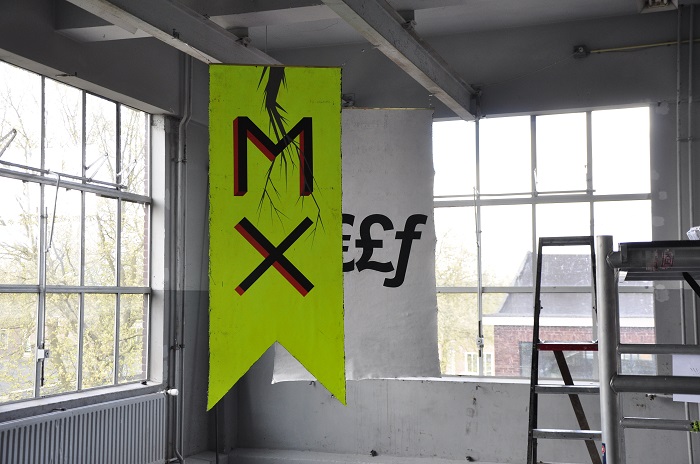
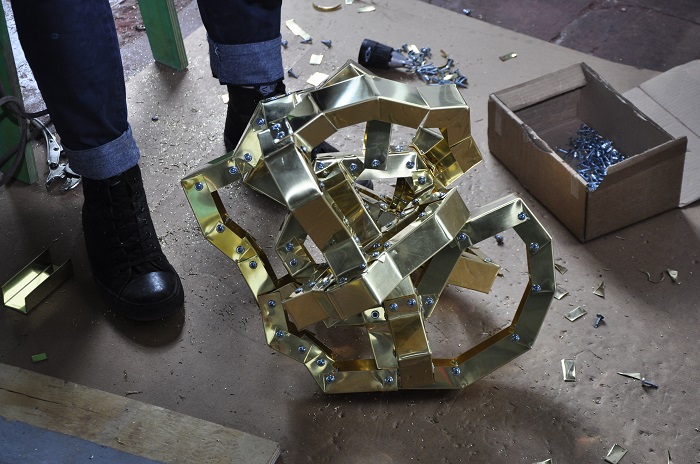
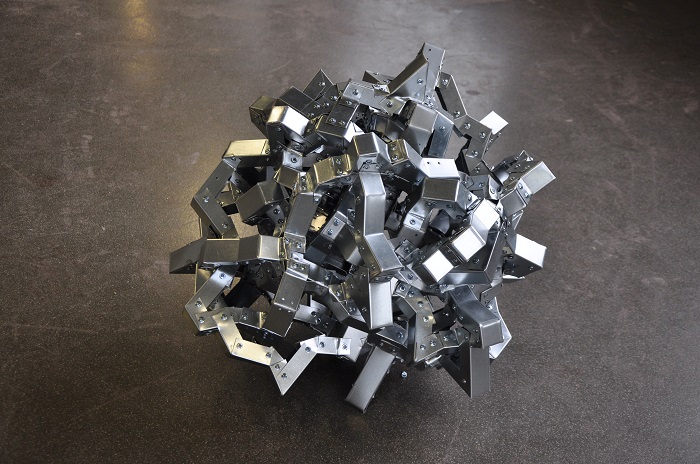


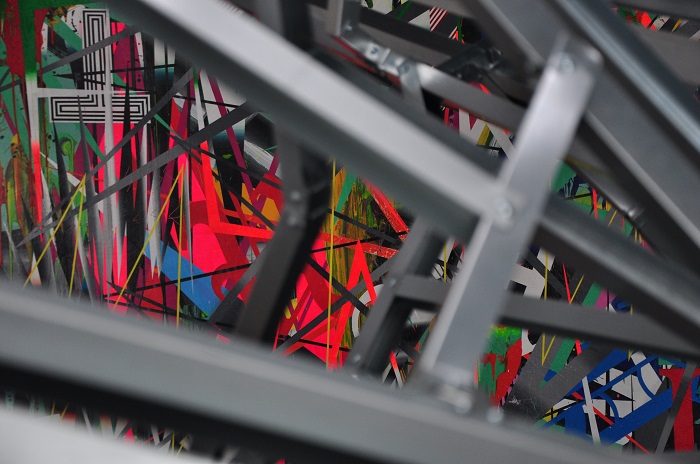
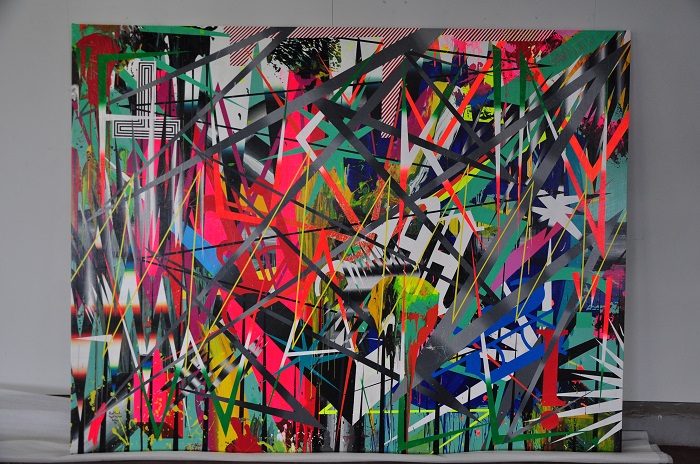




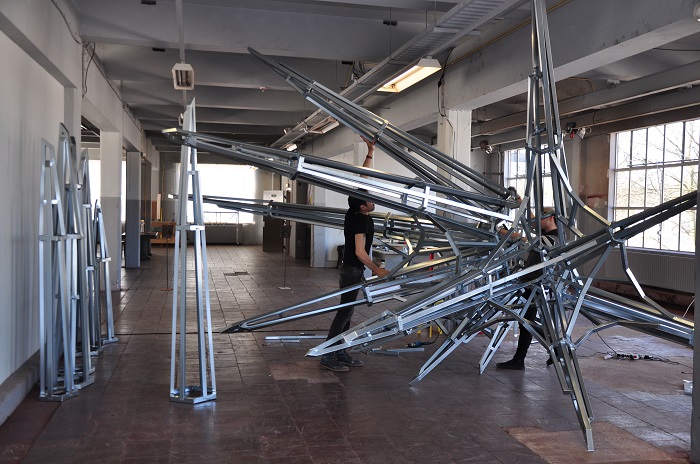
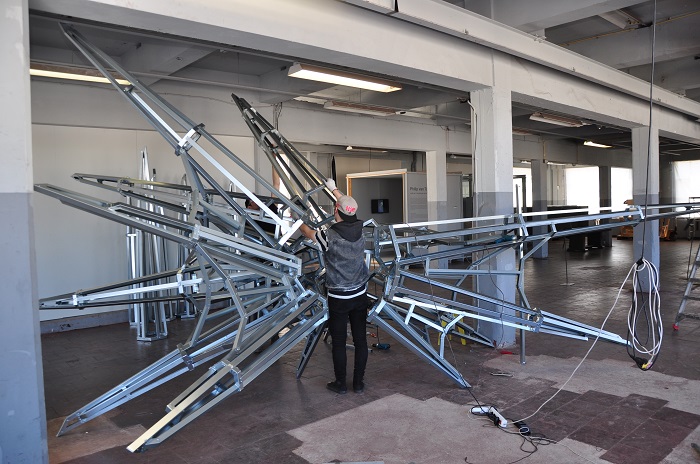













_____________________________________________
Project Background:
Where protection is needed
17-03-2017 in: Blogmessages, Current, Exhibition
When I paid a flying visit to the University of Architecture in Monterrey, Mexico for a lecture over a year ago, an artwork by the Mexican artist Daniel Ruanova stood outside the entrance to the beautiful building designed by the Japanese architect Tadao Ando. Inside the building, close to the entrance, was more of his work on display in the exhibition space.
It is quite intelligent and modern to display art in the entrance hall of an institute where creativity is the main focus – as is the case with architecture, or rather it should be. This stimulates a dialogue between the mutual influences of the creative professions. This is instead of the increasingly oppressive isolation that is caused by the general belief in specialisation, from which we are now gradually (thankfully) struggling away from.
The work that stood outside, an angular, constructive and open piece of protective clothing, is somewhere between isolation and openness, polarisation and reconciliation, fear and security. As is sometimes the way in the animal kingdom: protect yourself by scaring off others. For us in the Netherlands such issues are much lower on the agenda, or even not at all, but in Mexico there is arbitrariness and fear, and violence is the order of the day.
Daniel is our artist-in-residence and will create a sculpture during his time in the gallery. The creation process will form an important component of the exhibition, and visitors can follow this work-in-progress in the gallery. The opening is on 23 April. We have also had several canvasses shipped over from Mexico that make the exhibition equally as powerful as I experienced it in Monterrey and perhaps even more beautiful, as the making of is now an integral component of the exhibition.
photos from: Piet Hein Eek´s visit to Monterrey, MX
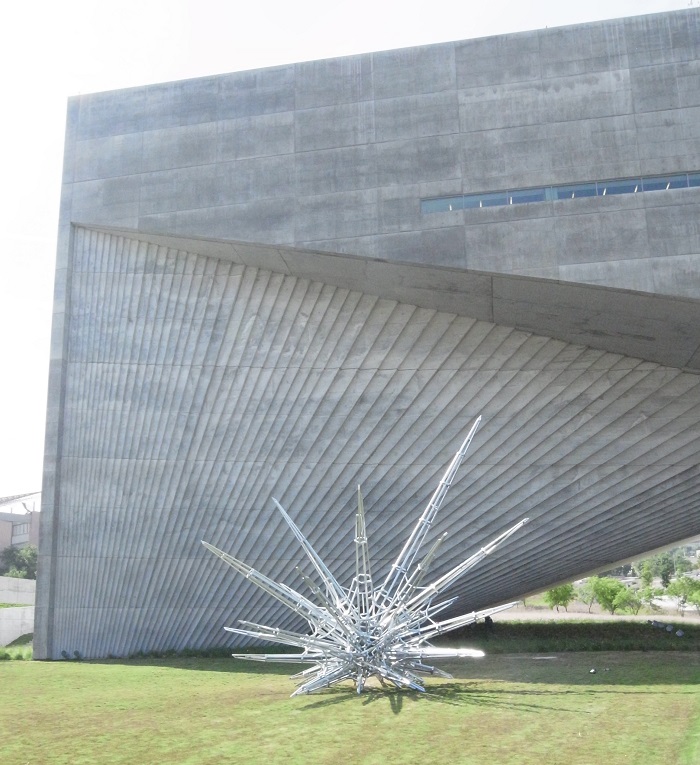
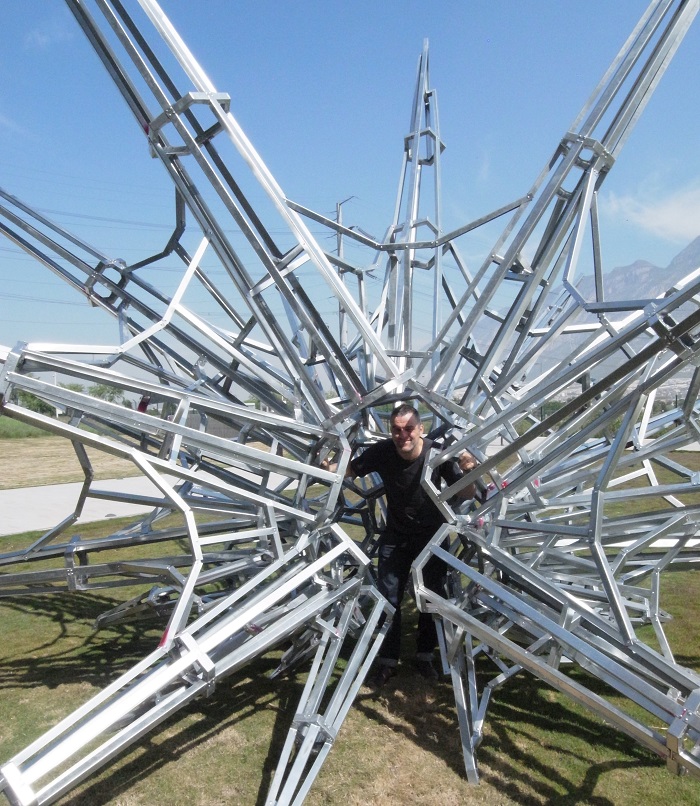

background press:
http://m.milenio.com/cultura/UDEM_diseno-arte_y_arquitectura-UDESIGN_UDEM_0_500950303.html
_____________________________________________
Exhibition Opening: Sunday, 23rd of April, show runs through 3rd of July 2017.
Gallery Contact: https://pietheineek.nl/en/info/contact
Location:
